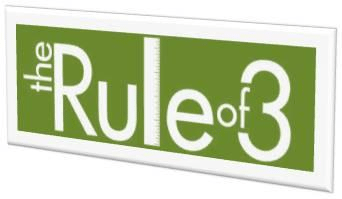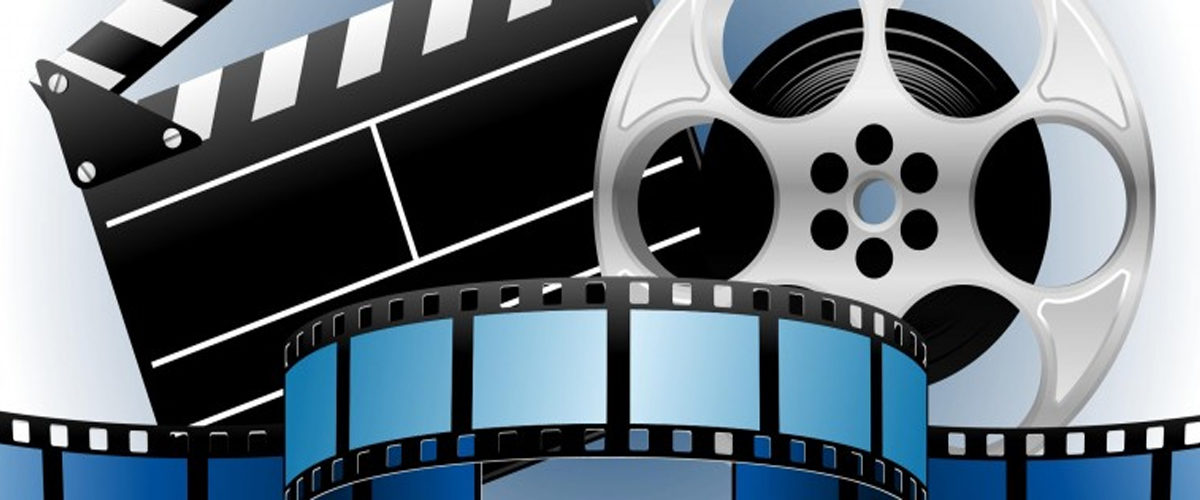
In the previous post, I talked about the benefits of turning your PowerPoint presentation into a video and how SlideGenius can do this in the most professional, financially viable way. This post will cover what happens after you get said video into your virtual hands.As mentioned before, the greatest benefit of having your PowerPoint presentation in a stand-alone, video format is the ability to leverage it by vastly increasing its exposure. The only trick is, how do you reach these new online audiences?Most of these mediums we recommend pushing your video through will hopefully sound familiar, but having an all-encompassing social media strategy is imperative in order to be effective.YouTube and VimeoUploading your video to both of these sites is a good first step to ensure your video is easily viewable. Not only does this make your video accessible with an easily sharable link, YouTube and Vimeo have become surprisingly socially active sites.Especially if you’re new to video sharing, and your YouTube and Vimeo channels don’t have a lot of activity, your videos won’t get many (if any) organic hits from these sites, but like almost any social medium, staying active with these channels will have a rolling effect of attracting audiences to your content over time.Twitter, Facebook, and LinkedInI lump these three commonly used social mediums together because, from a business standpoint, content on each is pushed in a very similar manner. The goal here, with all three of these, is to be mindful of how you present the content, since you’ll be more than likely posting the content as a general status to all your fans, followers, connections, etc., and not to anyone in particular.
Carmine Gallo’s Rule of Three: Incorporating the Most Persuasive Number in Communications

In the world of communication and storytelling, simplicity and clarity are often the keys to success. One of the most powerful tools for achieving this is the Rule of Three—a concept that is deeply rooted in human psychology and communication. Carmine Gallo, a renowned communications coach and author, emphasizes the effectiveness of the Rule of Three in his books and teachings. According to Gallo, incorporating three key points, ideas, or messages is the most persuasive and memorable way to communicate with your audience.Let’s explore how you can incorporate the Rule of Three into your presentations, speeches, and written communication to make your message more compelling, memorable, and persuasive.
What is the Rule of Three?
The Rule of Three is a writing and speaking principle that suggests that concepts or ideas presented in threes are inherently more satisfying, effective, and memorable. This principle is deeply ingrained in human communication, with examples found in literature, speeches, and marketing.
- Three is simple: The human brain processes information best in small, manageable chunks. Grouping ideas in threes helps break down complex information into more digestible parts.
- Three is memorable: People tend to remember three points more easily than four or five. When you present three ideas, your audience is more likely to retain them.
- Three is persuasive: Whether it’s a marketing message, a speech, or a pitch, delivering information in groups of three often feels more complete and convincing.
Examples of the Rule of Three in Practice:
- Political Slogans: “Life, Liberty, and the Pursuit of Happiness.”
- Marketing Campaigns: “Reduce, Reuse, Recycle.”
- Storytelling: “Beginning, Middle, End.”
In his book The Presentation Secrets of Steve Jobs, Gallo shows how the Apple co-founder frequently used the Rule of Three to simplify and drive home product messaging, making presentations memorable and impactful.
Why Three is the Magic Number in Persuasion
1. Cognitive Ease
The Rule of Three works because our brains are wired to process and retain information in threes. Research shows that humans have a limited short-term memory capacity, and three is the optimal number of items we can process without being overwhelmed. When ideas are presented in threes, they create a natural rhythm that makes them easier to follow and understand.
- Simplifies Complexity: By breaking down complex ideas into three main points, you make it easier for your audience to grasp and retain your message.
- Enhances Clarity: It avoids overloading your audience with too much information, helping them focus on the core message.
2. Creates a Pattern
Humans are naturally attracted to patterns, and three creates a sense of completeness and structure in communication. When you present ideas in threes, it feels like a complete, well-rounded argument or story.
- Triads are Satisfying: Triads (groups of three) create a sense of rhythm and flow, making your communication more pleasant and compelling to listen to or read.
- Creates Anticipation: When you establish a pattern, such as introducing two points and building toward a third, the audience anticipates a conclusion, making your final point more impactful.
3. Boosts Memorability
The Rule of Three helps your audience remember your key points long after the presentation or conversation ends. This is critical in business communication, where you want your ideas to stick in your audience’s mind.
- Recall is Higher: Studies show that when people are given three ideas, their ability to recall those ideas is higher compared to when more points are presented.
- Resonates with Audiences: The Rule of Three resonates with people because it aligns with how we naturally categorize and understand information.
How to Incorporate the Rule of Three in Communications
1. In Presentations
Incorporating the Rule of Three in presentations makes your content more digestible and helps keep your audience engaged. Structure your presentation around three main ideas or sections to create a clear, memorable framework.
- Three Main Points: Before designing your slides, identify the three most important messages you want your audience to take away. For example, if you’re pitching a product, your three points might be: “Innovative features, market demand, and competitive pricing.”
- Three Supporting Examples: When making a claim, back it up with three supporting facts, stories, or statistics. This provides enough evidence to be convincing without overwhelming your audience.
- Three Key Takeaways: Conclude your presentation with three actionable takeaways. This reinforces your message and ensures that your audience leaves with a clear understanding of the most important points.
Example:
In Steve Jobs’ famous iPhone introduction, he used the Rule of Three to unveil the product by saying, “An iPod, a phone, and an internet communicator.” This powerful triad made the audience understand immediately that the iPhone combined three revolutionary functions.
2. In Public Speaking
In speeches, the Rule of Three can add rhythm, cadence, and impact to your words. Whether you’re delivering a keynote or a motivational speech, using triads in your structure makes your points more persuasive and memorable.
- Three-Part Structure: Begin by outlining your three key points. For example, in a leadership speech, you might structure your talk around “Inspiration, Empowerment, and Action.”
- Repetition in Threes: Repeat key phrases three times for emphasis. This creates a memorable rhythm and drives home the point. For example, Martin Luther King Jr.’s iconic speech includes the phrase “I have a dream” repeated in threes.
- Storytelling in Threes: When telling stories or anecdotes to illustrate your points, keep the narrative in three parts: setup, conflict, and resolution.
Example:
In his famous Gettysburg Address, Abraham Lincoln used the Rule of Three in his opening line: “Government of the people, by the people, for the people,” cementing his message in the minds of his audience.
3. In Writing and Marketing
In marketing copy, the Rule of Three simplifies your message and makes it more appealing to consumers. Whether it’s crafting headlines, product descriptions, or campaign slogans, using triads is a highly effective tactic for grabbing attention.
- Three Key Benefits: When describing a product or service, focus on three main benefits. For example, a fitness app might highlight “Easy tracking, personalized workouts, and real-time feedback.”
- Three-Part Slogans: Craft slogans and taglines that incorporate three ideas. Slogans like “Just Do It” and “Think Different” have the power of simplicity, but adding a third element can create even more impact, such as “Stop. Think. Decide.”
- Three Calls to Action: End your marketing content with three clear calls to action. For example, on a landing page, you might direct your audience to “Sign up, Learn more, or Contact us.”
Example:
In a successful Apple marketing campaign, the slogan “Light. Years ahead.” follows the Rule of Three by introducing a triad concept, leaving an impactful message that highlights the product’s innovation.
Final Thoughts
Carmine Gallo’s Rule of Three offers a simple yet incredibly powerful framework for making your communication more effective and persuasive. By organizing your message into three key points, you can simplify complex ideas, enhance clarity, and boost memorability. Whether you’re delivering a presentation, writing a marketing campaign, or speaking to an audience, the Rule of Three helps you cut through the noise and make your message stick.Incorporating this principle into your communication can transform your ability to persuade and influence, making your message more impactful and ensuring that your audience walks away remembering what matters most.
How Much Should a Presentation Deck Cost?

“How much does it cost to hire a graphic designer to create a PowerPoint presentation for me?”
This is a common question we often get right off the bat from potential clients looking for a PowerPoint specialist, but it’s not a simple question to answer. First, we need to know about your business needs, your resources, and your goals. Are you a small startup or a Fortune 500? Basically, it’s a very personalized process, and there’s no blanket answer for it.
It’s a lot like asking, “how much does it cost for you to make me a website?”
There are a myriad of factors that go into the cost:
How big of a business are you?
How high-end do you want your website to be?
Do you already have a website to use as a foundation?
What kind of functionality do you want the website to have?
Just like web design, there are quite a few factors that we custom tailor to the needs of each client when landing on the price for their deck. That means what your presentation deck costs can be a little… or a lot.
The Low End Pitch Deck ($1,000 to $3,000)
Prices in this range fall into two categories, returning clients looking to improve a deck they’ve already had designed, and they’d like to perform relatively minor improvements to it. A complete overhaul of a presentation requires much more time and effort.The other group that falls into this category are those looking for a new, custom-designed deck, but are only willing to pay the bare-bones price for it, which we highly discourage. Having a solid visual aid is the second most important part of a presentation. The first is showing up. You don’t want to skimp on your PowerPoint presentation, because that’s sure to leave a bad taste in the mouths of potential clients or investors.Remember, a professional PowerPoint presentation is an investment. An investment that will surely produce an ROI and help impress and attract new clients, which is the opposite effect that a mediocre presentation will have. A bad impression is worse than no impression at all.
Mid-range Presentation Design ($3,000 to $10,000)
Most of our clients fall into this range. This involves either significantly revamping a previous presentation, or doing a new presentation involving a significant amount of animation and custom graphic design.The wide amount of variation in this range depends largely on the quantity of slides in your deck and the amount of graphic design and animation needed on each slide. Again, costs here can be greatly leveraged depending on how much copywriting, design, and multimedia is being brought to the table by the client.
The Upper End Presentation Services ($10,000 to $50,000)
If you’re a young startup looking to breaking in to a competitive, high-end market and you don’t have much to show for yourself concerning branding or multimedia, we can do it all for you, but it will be a significant cost. Building a public, corporate identity through a presentation is a huge task, so it’s best to do it right the first time.This range also includes multi-deck projects and large decks nearing the triple-digit slide count. Also in this range are the custom-designed slide libraries, which are essentially an interchangeable database of slides that can be catered to the individual needs of sales teams with in larger companies, while maintaining a consistent set of slides controlled by management.We’ve found the most satisfied clients are the ones who view presentation and pitch deck design as an evolving, ongoing relationship. While a small startup may initially only have the resources for a fairly basic presentation, they are able to continue working with us, and improve the professionalism, appeal, and selling power of their presentation as their business expands, and they have more to invest in a presentation’s power to attract new clients.This allows the client to not only spend just the resources they have available, they’re able to constantly pinpoint and customize exactly what they want out of a presentation, and consequently, as presentation designers, we’re able to figure out over time exactly what optimizes your business from a presentation point of view. We work best when our process and your business grow alongside one another.
The Importance of StoryBoarding: You Wouldn’t Make a Movie Without Writing a Script

Imagine trying to create a movie without a script or a plan—chaos would ensue. Just as filmmakers need to visualize their scenes and script each shot, presenters need to map out their presentations to ensure clarity, flow, and impact. This is where storyboarding comes in. Storyboarding allows you to organize your ideas visually before diving into creating slides, helping you deliver a more cohesive and engaging presentation.Here’s why storyboarding is crucial to crafting a winning presentation:
1. Clarifies Your Message and Structure
Storyboarding forces you to think about the main message you want to convey and how best to organize your content. By planning each slide’s purpose and its relationship to the overall presentation, you ensure that your message is clear and structured logically.Why It Matters:
- Improved Flow: Storyboarding helps you ensure that each slide follows logically from the last, leading to a coherent narrative that guides your audience seamlessly from point to point.
- Avoids Overwhelm: Without a storyboard, it’s easy to overwhelm your audience with too much information. Planning ahead allows you to streamline your content, focusing only on the essential information.
Example: A marketing presentation might begin with a slide introducing the problem, followed by slides that present data, explain solutions, and end with a call to action. Storyboarding this sequence ensures clarity and flow.
2. Visualizes the Design Early
Storyboarding allows you to experiment with design concepts, including layouts, images, and text placement, before committing to creating slides. This ensures that your design complements your message and helps you achieve a polished and professional final presentation.Why It Matters:
- Consistency: Storyboarding helps you maintain visual consistency across slides, including the use of fonts, colors, and images. This cohesiveness makes your presentation look more professional.
- Design Choices: You can plan where to place key visuals, such as graphs, infographics, or images, to support your message and avoid overcrowding your slides.
Example: By storyboarding a financial report presentation, you can plan where graphs and data visualizations will be placed, ensuring they’re spaced out effectively and not crammed onto a single slide.
3. Helps with Time Management
Presentations often have strict time limits. Storyboarding allows you to plan how much time you’ll spend on each section and slide, ensuring you don’t run over your allotted time. It helps you balance content between slides, keeping your presentation concise and impactful.Why It Matters:
- Stays Within Time Limits: Storyboarding helps you allocate time to each section, ensuring you give enough attention to important points without going overboard.
- Reduces Last-Minute Changes: A well-thought-out storyboard saves time in the slide creation process. It reduces the need for last-minute adjustments that often arise when slides are created without proper planning.
Example: If your storyboard indicates you’ve planned too much content for a 10-minute presentation, you can adjust early on by condensing points or breaking content into multiple presentations, saving you time during final preparation.
4. Simplifies Collaboration
When working on a team project, storyboarding helps everyone align on the presentation’s direction and content. It provides a clear visual outline, ensuring that each team member knows what’s expected, and that the overall presentation remains cohesive.Why It Matters:
- Encourages Feedback: A storyboard provides a tangible framework for team members to review and offer feedback before creating slides. This ensures any issues are addressed early in the process.
- Divides Responsibilities: Storyboarding allows team members to divide work efficiently, with each person responsible for specific sections or slides based on the plan.
Example: In a product pitch, the marketing team might focus on early slides that introduce the problem, while the engineering team focuses on solution slides. A storyboard ensures these sections fit together seamlessly.
5. Prevents Design Overload
Without a storyboard, it’s easy to focus too much on flashy graphics and animations rather than the content itself. Storyboarding allows you to focus on the message first, ensuring that any design elements you add later serve a purpose and don’t detract from the message.Why It Matters:
- Content-First Approach: Storyboarding ensures you focus on the message before getting caught up in design elements, preventing unnecessary or distracting animations, transitions, or visuals.
- Design with Purpose: By outlining each slide’s purpose in your storyboard, you ensure that any design or visuals enhance the message rather than overwhelm it.
Example: When storyboarding a sales presentation, you can decide where to place emphasis on key stats or figures, ensuring that any animations or transitions are used sparingly and effectively to highlight those points.
Final Thoughts
Storyboarding your presentation is essential for organizing your ideas, ensuring a smooth flow of content, and creating a professional, visually appealing deck. Just like a movie script, a storyboard helps you visualize and structure your narrative, keeping your audience engaged from start to finish. Whether you’re working solo or collaborating with a team, investing time in the storyboarding phase can dramatically improve the quality and impact of your final presentation.
Incorporating Humor into a Presentation

Humor is a surprisingly effective tool in public speaking. No matter what level of professionalism you find yourself presenting at, a bit of comedic relief is almost always refreshing.Sometimes the gravest, driest, or most technical speeches can often be the most in need of humor. Dense, heavy speeches can be very demanding, even exhausting for an audience, and eventually listeners may get weary and lose focus. Injecting a little humor into your PowerPoint presentation is helpful in relieving some built up tension.Humor might not be for youA joke or two–maybe a witty comment here or there–can really brighten up a speech, engage your audience, and help make a lasting impression, but when done poorly, it can not only create a cringe-worthy situation, it can take all credibility from your speech.If you’re very uncomfortable using humor in casual conversation or in your personal life, it may not be worth the risk in an important presentation, because a flubbed joke can have a devastating impact on a speech.Practice!You might be one of those effortlessly hilarious people that’s constantly making your friends laugh, but that doesn’t mean you shouldn’t expect to make an audience laugh so easily, or so spontaneously.
Turn Your PowerPoint Presentation into a Video

While a human element is naturally ideal for presentations, you don’t always have to be in the room with your audience for them to hear your pitch. Turn your PowerPoint presentation into a video, and the amount of people you’re capable of exposing your presentation to increases enormously.While your professionally designed PowerPoint is obviously a big asset during a presentation, you can further leverage it by using it as a standalone marketing tool.If you’re simply looking for a way to show people the bare-bones of the presentation in a video format, the conversion process is simple (Here’s a good How To by Microsoft).This can be useful for internal communication as well. For instance, if you’d like to share a presentation within your company, converting and sending it as a video allows others to open and view it without Microsoft PowerPoint, making it accessible on smartphones and tablets.SlideGenius can design your presentation to be a video presentation, including professional voice recording and script writing, which is obviously preferable to converting a professional PowerPoint to a video on your own. By having SlideGenius create the entire video package, you guarantee that the video has the same level of professionalism and quality as your in-person presentation.If this is a tool you plan on using to market your business with–whether you’re posting it on your website or promoting it through social media–you should make it as professional as if you were giving a presentation to potential clients or investors.
References:
“4 PowerPoint Resources You Can’t Miss Out On.” SlideGenius. November 20, 2013.”Turn Your Presentation into a Video.” Support.office.com.
A Guide to Tackling Stage Fright

Public speaking can be intimidating, even for seasoned professionals. Stage fright, or the fear of speaking in front of an audience, affects many presenters. Whether it’s the thought of being judged, making mistakes, or simply standing in front of a crowd, stage fright can interfere with delivering your message effectively. However, with the right approach, you can overcome this anxiety and deliver a powerful presentation. Here’s a comprehensive guide to tackling stage fright and becoming a more confident speaker.
1. Prepare Thoroughly
The foundation of a successful presentation lies in preparation. When you know your material inside out, you’re less likely to stumble or lose your train of thought. Break your content into key points and rehearse them multiple times until you’re comfortable.
- Organize Your Content: Outline the structure of your presentation clearly, with an engaging introduction, body, and conclusion.
- Practice Out Loud: Rehearsing your speech out loud can help you hear how your ideas flow and allow you to make necessary adjustments. If possible, practice in front of a friend or record yourself.
- Familiarize Yourself with the Venue: If you have access to the presentation space beforehand, take a walk around the stage and familiarize yourself with the setup.
2. Visualize Success
Visualization is a powerful tool that can help you conquer stage fright. Instead of focusing on what could go wrong, visualize yourself delivering a confident and engaging presentation. Picture the audience reacting positively, and imagine the sense of accomplishment you’ll feel afterward.
- Focus on Positive Outcomes: Think about your audience being engaged and applauding your performance. Visualizing success can boost your confidence and reduce nervousness.
- Adopt a Power Pose: Before going on stage, stand in a confident posture for a few minutes—this is known as a “power pose.” It can trick your brain into feeling more assured and in control.
3. Practice Deep Breathing
When anxiety strikes, your heart rate increases, and your breathing may become shallow. Deep breathing exercises are a quick and effective way to calm your nerves before stepping on stage.
- Breathe Deeply: Inhale slowly through your nose for a count of four, hold for four, and then exhale for another count of four. Repeat this several times until you feel more centered.
- Relax Your Body: As you breathe, consciously relax your muscles, especially in your shoulders and neck, where tension often accumulates. This will help you feel more grounded and composed.
4. Focus on the Message, Not Yourself
A common source of stage fright is the fear of being judged. Shift your focus away from yourself and place it on the message you’re trying to convey. Remember that the audience is there to gain something valuable from your presentation, not to scrutinize every word or gesture.
- Shift Attention to the Audience’s Needs: Concentrate on how your presentation benefits the audience. By focusing on their needs rather than your own performance, you can divert your mind from self-consciousness.
- Engage the Audience: Ask questions, encourage participation, or share stories to make the presentation more interactive. Engaging with the audience helps to build a connection, making the experience less daunting.
5. Start with a Strong Opening
First impressions matter. Starting your presentation confidently can set the tone for the rest of your performance. Craft an opening that grabs attention and gives you a sense of control.
- Use a Powerful Quote or Statistic: Starting with a compelling quote, statistic, or even a short story can draw in the audience and boost your confidence from the beginning.
- Make Eye Contact: Engage with the audience by making eye contact with a few friendly faces in the room. This will make the presentation feel more conversational and help calm your nerves.
6. Accept and Embrace Nervousness
It’s important to recognize that nervousness is a natural part of public speaking. Even experienced presenters feel anxiety before a big speech. Rather than trying to eliminate your nerves, work with them.
- Channel Nervous Energy Positively: A certain level of anxiety can actually heighten your focus and make you more alert. Channel this energy into enthusiasm for your subject.
- Normalize Your Feelings: Remember, many people in the audience likely experience stage fright themselves, and they will empathize with you.
7. Use Positive Affirmations
The way you talk to yourself matters. Negative thoughts like “I’ll mess up” or “They won’t like my presentation” can intensify anxiety. Replace these thoughts with positive affirmations.
- Repeat Positive Phrases: Tell yourself things like, “I am well-prepared,” “I can do this,” or “The audience wants to hear what I have to say.” This shift in mindset can significantly reduce stress and build confidence.
8. Learn to Laugh at Mistakes
Mistakes happen to everyone. What matters is how you handle them. Instead of getting flustered, laugh off small errors and move on. Your audience is likely more forgiving than you think.
- Don’t Dwell on It: If you stumble over a word or lose your train of thought, take a breath, smile, and continue. Chances are the audience won’t even notice.
- Use Humor: If appropriate, self-deprecating humor can lighten the mood and show the audience that you’re human too.
9. Gather Feedback and Reflect
Once the presentation is over, gather feedback from trusted colleagues or audience members. Use their constructive criticism to improve for future presentations. The more you present, the more comfortable you’ll become.
- Reflect on Your Successes: Take time to acknowledge what went well in your presentation. Focusing on your strengths will build your confidence for next time.
- Embrace Continuous Improvement: Feedback is essential for growth. View each presentation as an opportunity to refine your skills and lessen your fear over time.
Final Thoughts
Stage fright may seem overwhelming, but with practice and the right techniques, it can be managed. By focusing on preparation, engaging with the audience, and maintaining a positive mindset, you can overcome anxiety and deliver presentations with confidence. Remember, every great presenter has felt fear at some point—what sets them apart is their ability to face it head-on and continue moving forward. You’ve got this!
4 Rules for Boosting Creativity for Your Presentation

It’s one thing to show a few slides with some bullet points, pictures and graphs; it’s another to give a presentation. Weird, right? That kinda’ sounds like the same thing… wrong.
Presentations are meant to inform, engage, and inspire audiences- the former does none of these things. With that, I’ll amend my original statement to this: It’s one thing to show a few slides with some bullet points, pictures and graphs, but it’s another to give a VALUABLE presentation.Valuable presentations, like most aspects of business, stem from creativity. Unfortunately there is a strong misconception about creativity in today’s society as it is commonly believed that it only comes to select group of people. The truth is that everyone has the capacity to be creative, which means everyone has the ability to create a valuable presentation. The key to being creative in your professional PowerPoint presentation comes before the actual construction of the presentation. To improve one’s conditions for innovation, one must create the appropriate setting. Here are the 4 rules to boost your creativity within your presentations:
1. You must create a space for yourself to be uninterrupted for a specific amount of time.
This is called “creative block”- A specific starting and finishing time is necessary to effectively cultivate a “creative space.” If you have trouble focusing on getting your presentation up to the level it should be, creative blocks are the answer. Without defined times and spaces, it is too easy to drift back into dealing with the everyday stress and problems, something that will prevent you from advancing creatively and effectively.
2. Surround yourself with soothing senses.
The sight, hearing, taste, smell, and touch in your environment will dictate your state of mind. In light of that, placing yourself in a peaceful setting, with plants, light, or soothing scent will help stir up your creative mind. In fact, studies show that the more senses your body feels at any given time, the harder your brain will work to react. The harder your brain works, the more creative your actual work becomes.
“Creativity is not a talent. It is a way of operating.”
-John Cleese
3. Cut your fat every time.
Dr. Seuss wrote Green Eggs & Ham after betting that he couldn’t produce a story using less than 50 words. The research shows that Seuss was on to something. Most people naturally take the path of “least resistance” and build off of older or existing concepts when brainstorming, which can lead to less creative ideas.Cutting the fat, or raising the bar in what you do, will allow you to produce more creative work. Follow Dr. Seuss and place restrictions on yourself while creating whatever it is you create. If you usually write two page posts, go for one page!Even Steve Jobs practiced this fat cutting principle. When the first official prototype of the iPhone 3 was created, he brought it into an engineers meeting, and dropped it into a clear box of water. He stood there and watched the bubbles from inside the device float up. He then proved to his designers that the phone could be trimmed in size based off the amount of air it released. He had the prototype made smaller and thinner, which in turn made a more appealing product. The limiting nature of any given task can bring out one’s most creative side.
4. Rethink and Renew.
Einstein once said, “If I had an hour to solve a problem, I’d spend 55 minutes thinking about the problem and five minutes thinking about solutions.” Instead of rushing into creating your presentation, it is better to visualize the problem you are working on in several angles. Most presenters think they know what their work is and how it needs to be done, but the fact of the matter is that few people actually take the time to analyze what they’re doing as being the most effective or efficient.Clearly, there is always the issue of time constraints, but just because you take longer to plan doesn’t mean you’ll take longer to finish. In fact, it is quite possible, that in taking time to thoroughly think you will find that you need less work done than you previously thought, or that the work can actually be done in more efficient ways.You don’t need to be a professional PowerPoint designer to find the best approach for your presentation. Oftentimes, the best approach is to picture the intended audience of your next presentation. Think of what inspires them. What angers them? What problems do they face? What market are they a part of?Instead of rushing to start your presentation design, spend more time thinking of what you’re even doing, why you’re doing it and what can be made better?
References:
Ciotti, Gregory. “7 Ways to Boost Your Creativity.” 99u. May 29, 2013.”Presentation Resolutions: 3 Tips to Help You Progress in 2014.” SlideGenius. January 2, 2014.Reynolds, Garr. “Tips on How to Be More Creative by John Cleese.” Presentation Zen. July 27, 2012.“Steve Jobs: Creating an Engaging Presentation.” SlideGenius. July 23, 2013.
It Doesn’t Matter, Any Tequila!

Sure it’s funny, but think if it wasn’t about tequila, and instead it was about your business. You obviously wouldn’t be laughing.
If you’re looking for a house to live in, would you choose one by saying this to your realtor, “It doesn’t matter, any house?”How about when finding a spouse? Or what about when your choosing a major in college?Any semi-rational person would not. Houses, spouses, and careers are all monumental aspects to someone’s life and because of that, people tend to weigh out the pros and cons thoroughly when it comes to any decision.Much like houses, spouses and careers are huge aspects to someone’s life, the way the world identifies with your company is one of the most crucial aspects to its success. When you are presenting yourself, or more importantly your company, to an audience of buyers, sellers, investors, or whoever, it is imperative to come off as a professional, valuable, and effective entity.
Impressions you give
Most people will judge whether or not they like you, dislike you, find you interesting or boring in a matter of minutes, sometimes even seconds. These minutes are what can lead to earning or losing new clients or sales. Knowing that your presentations have this much significance, a rational person wouldn’t say “It doesn’t matter, any presentation.” In fact, they would focus on making that presentation the best it could possibly be.This is where you bring in professional presentations designers, like SlideGenius. SlideGenius is headquartered in San Diego, California with over 500 Worldwide Clients. The “Geniuses” (presentation experts) see on average over 200 presentations per month and have years of professional experience creating captivating PowerPoint presentations for a wide variety of clients.
Bringing in Professionals
The Geniuses can update an existing presentation or build one from scratch, leveraging your brand. SlideGenius works with you to ensure that the message you want to get across to your audience is communicated as effectively as possible, while leaving your audience impressed with a polished, professional presentation. If you do not have a professionally designed PowerPoint Presentation you are undeniably leaving business on the table. Many sales people have reported an increase of up to 25-50% in closed sales simply by providing a highly visual presentation.When it comes to your business, don’t take just anything. Take the best, and be the best.Work Cited:Http://www.ispot.tv/ad/7tlp/hornitos-plata-tequila-any
3 Additional Perks of Getting a PowerPoint Presentation Specialist

As much as we hate tooting our own horn (mostly true), we want to expand on our recent post, “3 Reasons Why You Need a PowerPoint Specialist.”In the previous post, we listed a few of the reasons why our clients have found that having a professional PowerPoint design made was imperative for businesses to be perceived as professional and competent. So if you’re a business that wants to be perceived as unprofessional and incompetent, our services aren’t for you. So here are a few more reasons why you can’t afford to skimp on presentation design.
Build Confidence in Your Audience, Yourself
Would you rather show up to the Monaco Gran Prix in a MacLaren F1 or that dinky Honda Civic you drove in high school? It wouldn’t matter if you were the best driver that’s ever been behind the wheel, you’re not going to fare well with a hunk of junk car.It often doesn’t matter how excellent a presenter or public speaker you are, if you show up with an amateur presentation, your presentation ability won’t be evident, and your presentation won’t impress anyone. In order for your audience–whether that be investors, potential clients or employers–to have confidence in you, your professionalism and capability need to be apparent.
Make the Sell
A professionally designed presentation is an expense, but more importantly, it’s an investment.Our promise to clients, “We design presentations that sell,” is just that: A promise. The increase in business our clients experienced after deciding to show up to important presentations with a professionally designed presentation caused them to continue to employ our services.
More Efficient Allocation of Resources
We’re better than you are at designing PowerPoint presentations. We’re sure you’re better at doing whatever it is your business does too. Outsourcing can be a valuable tool in employing outside expertise when it comes to specialized services.Many remain skeptical about outsourced services, fearing the hidden costs and lack of transparency, but we’ll walk you through every step of our process here at SlideGenius, so you know exactly what you’re paying for.Allowing clients to see our process in action lets them realize the number of man hours they save by outsourcing their presentation design to us, thus being able to spend time on the business they do best, or on preparing for the oral portion of their presentation while we focus on the visual aspect.
Reference:
“3 Reasons Why You Need a PowerPoint Presentation Specialist.” SlideGenius. August 1, 2013.
